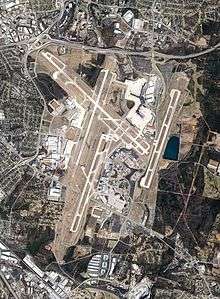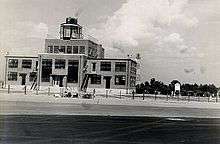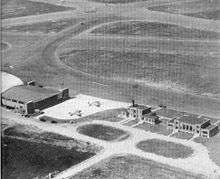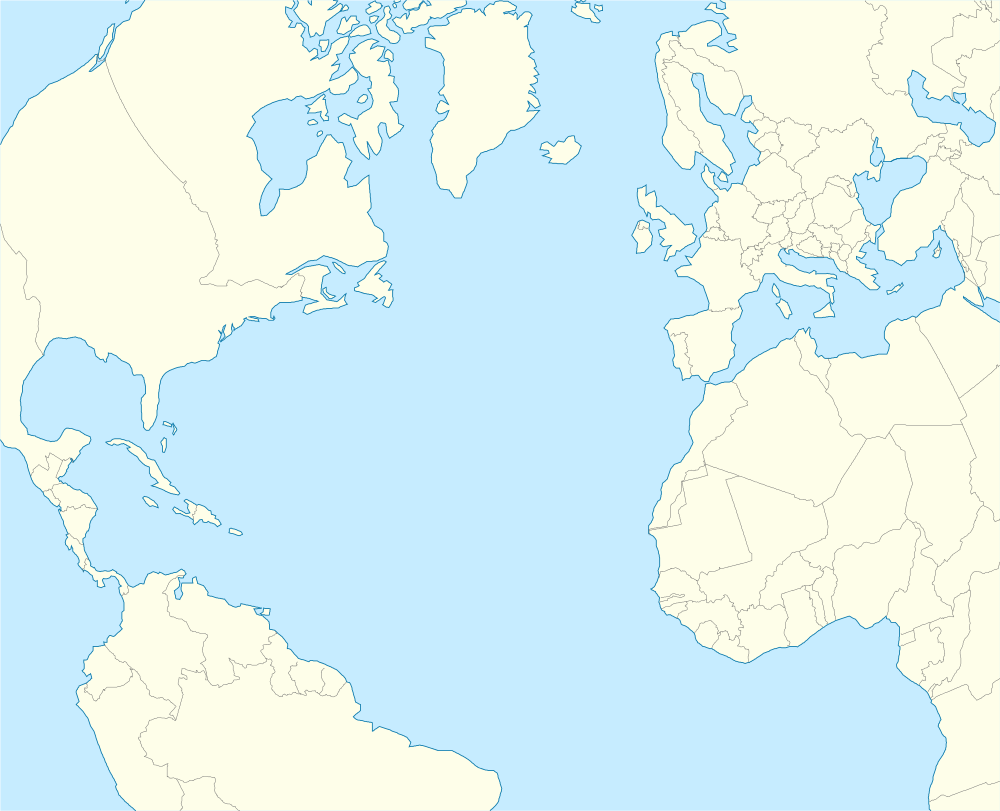Nashville International Airport
| Nashville International Airport | |||||||||||||||||||||||
|---|---|---|---|---|---|---|---|---|---|---|---|---|---|---|---|---|---|---|---|---|---|---|---|
|
| |||||||||||||||||||||||
 | |||||||||||||||||||||||
| Summary | |||||||||||||||||||||||
| Airport type | Public | ||||||||||||||||||||||
| Owner | Metropolitan Government of Nashville and Davidson County | ||||||||||||||||||||||
| Operator | Metropolitan Nashville Airport Authority (MNAA) | ||||||||||||||||||||||
| Serves | Nashville, Tennessee | ||||||||||||||||||||||
| Focus city for | Southwest Airlines | ||||||||||||||||||||||
| Elevation AMSL | 599 ft / 183 m | ||||||||||||||||||||||
| Coordinates | 36°07′36″N 086°40′55″W / 36.12667°N 86.68194°WCoordinates: 36°07′36″N 086°40′55″W / 36.12667°N 86.68194°W | ||||||||||||||||||||||
| Website | www.flynashville.com | ||||||||||||||||||||||
| Map | |||||||||||||||||||||||
 BNA Location of airport in Tennessee / United States  BNA BNA (the US) | |||||||||||||||||||||||
| Runways | |||||||||||||||||||||||
| |||||||||||||||||||||||
| Statistics (2017) | |||||||||||||||||||||||
| |||||||||||||||||||||||
Nashville International Airport (IATA: BNA, ICAO: KBNA, FAA LID: BNA) is a joint public and military use airport in the southeastern section of Nashville in the U.S. state of Tennessee. It is included in the National Plan of Integrated Airport Systems for 2011–2015, which categorized it as a primary commercial service airport (more than 10,000 daily arriving and departing flights per year).[2] Established in 1937, its original name was Berry Field, from which its ICAO and IATA identifiers are derived. The current terminal was constructed in 1987, and the airport took its current name in 1988. Nashville International Airport has four runways, the longest of which is 11,030 feet (3,360 m) long. BNA covers 3,900 acres (15.8 km2.) of land.[1] The airport is currently served by 16 airlines and offers 520 daily arriving and departing flights with nonstop flights to more than 56 markets in the US, Canada, Mexico, the Caribbean and Europe.
The airport terminal complex includes an over 1,000,000-square-foot (93,000 m2) passenger terminal with 44 air carrier gates. BNA serves a trade area of 79 counties in Middle Tennessee, southern Kentucky, and northern Alabama. The airport is a focus city for Southwest Airlines and was previously a hub for American Airlines. Berry Field Air National Guard Base is located at Nashville International Airport. The base is home to the 118th Airlift Wing and is the headquarters of the Tennessee Air National Guard.
History
Origins

Nashville's first airport was Hampton Field, which operated until 1921. It was replaced by Blackwood Field in the Hermitage community, which operated between 1921 and 1928. The first airlines to serve Nashville, American Airlines and Eastern Air Lines, flew out of Sky Harbor Airport in nearby Rutherford County.[3]
By 1935 the need for an airport larger and closer to the city than Sky Harbor Airport was realized and a citizens' committee was organized by mayor Hilary Howse to choose a location. A 340-acre (1.4 km2) plot along Dixie Parkway (now Murfreesboro Road) composed of four farms was selected, and construction began in 1936 as one of the first major Works Progress Administration projects in the area. The airport was dedicated on November 1, 1936, as Berry Field, named after Col. Harry S. Berry, the Tennessee administrator for the Works Progress Administration. It officially opened in June 1937 with much fanfare, including parades, an air show, and an aerial bombardment display by the 105th Aero Squadron, which was based at the field.[4] Passenger service began in mid-July through American Airlines and Eastern Airlines, both of which operated Douglas DC-3 aircraft. The new airport had three asphalt runways, a three-story passenger terminal, a control tower, two hangars and a beacon, and was constructed at a cost of 1.2 million dollars. In its first year, Berry Field served 189,000 passengers.[3][5][6]
Bob Hoover, regarded as one of the greatest pilots to have ever lived, learned to fly at Berry Field.

During World War II, the airfield was requisitioned by the United States Army Air Forces Air Transport Command as the headquarters for the 4th Ferrying Command for movement of new aircraft overseas. During this time, the Federal government expanded the airport to 1,500 acres (6.1 km2). At the end of the war, the airport was returned to the control of the city, with a number of facilities remaining for support of the tenant unit of the Tennessee National Guard.[5]
Early jet service
The airport had been enlarged by the military during World War II, but in 1958 the City Aviation Department, started planning to expand and modernize the airport.[5] Nashville gained its first scheduled jet service in 1961, the same year a new 145,000 square feet (13,500 m2) terminal opened off of Briley Parkway, west of runway 2L. For the first time more than half a million people passed through the airport when the six airlines that served Nashville carried 532,790 passengers. These renovations also included expansion of an existing runway, with 2L/20R being extended by 600 feet (180 m), and the construction of a new crosswind runway, 13/31.[5] In 1962 Nashville became the first municipal airport in the United States with a public reading room when the Nashville Public Library opened a branch inside the terminal.[7]
Modern terminal and hub status
By the 1970s the airport was again in need of expansion and modernization. In 1973 the newly created Metropolitan Nashville Airport Authority (MNAA) finalized a master plan to coordinate the long-term growth of the airport along projected increases in needed passenger capacity. This plan included the building of a new terminal and a new parallel runway across Donelson Pike to handle increasing operations by reducing the time between consecutive takeoffs and landings.[5]
In the early 1980s the MNAA commissioned Robert Lamb Hart, in association with the firm of Gresham, Smith and Partners, to design a modern terminal; construction began in 1984 and was completed in 1987. It had three main concourses and a smaller commuter concourse radiating from a distinctive three-story atrium.[3] An international wing was built in Concourse A; the airport was renamed Nashville International Airport/Berry Field. It is now rare to see the "Berry Field" portion used, but the airport's IATA code (BNA) is short for Berry Field Nashville, and the military facilities at the airport are still commonly known by this name. In 1989 a new parallel runway (2R/20L) was opened for use.[5]
American Airlines announced in 1985 that it would establish a hub at Nashville, investing $115 million to develop a new 15-gate concourse and applying for $50 million in federal funds to build a new 10,000-foot runway. The hub was intended to compete with Delta Air Lines, Eastern Airlines and Piedmont Airlines for north–south traffic in the eastern United States.[8] American and its regional affiliate American Eagle officially opened their hub in Nashville in April 1986.[9] Besides providing nonstop flights to many cities in the U.S. and Canada, American also operated a transatlantic flight from Nashville to London (flying into Gatwick Airport). The American hub was touted as a selling point in bringing companies such as Nissan and Saturn Corporation to the Nashville area. Nonetheless, the hub operated at a loss even during its heyday in the early 1990s, like the similarly sized hub American had at Raleigh/Durham.[10]
American's service peaked in 1993 with 265 daily departures to 79 destinations, after which flights were gradually scaled back until the hub eventually closed in December 1995.[11] American cited the aftermath of the early 1990s recession and the lack of local passengers as reasons for the closure. As American scaled down its operations, it subleased its gates to other carriers, largely in order to cover the debt used to construct the hub facilities, which American had guaranteed.[10] Southwest Airlines quickly filled the void by seizing 54% of the Nashville market and making it a focus city.[12]
Recent history
In 2002, Embraer Aircraft Maintenance Services (EAMS) selected Nashville as the location for its Regional Airline Support Facility, which was built on the site of the demolished 1961 terminal building.[13]
In October 2006, the Nashville Metropolitan Airport Authority started an extensive renovation of the terminal building, designed by Architectural Alliance of Minneapolis and Thomas, Miller & Partners, PLLC of Nashville,[14] the first since the terminal opened 19 years prior. Phase one of the project involved updating and expanding food and vending services, improving flight information systems, and construction of a new consolidated security checkpoint for all terminals. Phase one was completed in 2009. Phase two of the project involved the expansion of the ticketing and check-in areas, the construction and renovation of bathrooms, and the renovation of the baggage claim areas. Completion of the second phase of the renovation project was completed in 2011.[15] These renovations bring the total size of the terminal building to over 1,000,000-square-foot (93,000 m2).[16] In addition to the terminal renovation and expansion, the renovations included expanding parking and a new rental car facility.[17] The renovated terminal was named the Robert C. H. Mathews Jr. Terminal in honor of a MNAA board chair in 2011.[5]
In addition to passenger amenities in the terminal and parking areas, the renovations included improvements to the airport's infrastructure. The largest project was the complete demolition and rebuilding of Runway 2L/20R, which was completed in August 2010. In addition to the rebuilding of Runway 2L/20R, Runway 2C/20C was closed from September through December 2010 for pavement and concrete rehabilitation. BNA's 91 acres (0.37 km2) of tarmac were also rehabilitated during this project after being funded entirely by American Recovery and Reinvestment Act allotments.[18]
Since 2011, Nashville has been experiencing major growth in both passenger numbers and new service. Total passengers reached a record 10.3 million in 2013, which surpassed the record set during the peak of the American Airlines hub in the early 1990s.[19] On June 13, 2017, Nashville International Airport was named the fastest growing airport of its size and awarded the Airport Traffic Growth Award from anna.aero, an industry news and analysis organization. The award recognizes BNA's 11.2 percent growth in passenger traffic in 2016 in the mid-sized airport category (5 million – 20 million annual passengers).[20]
In August 2017, British Airways announced nonstop service between Nashville and London (flying into Heathrow Airport), which began on May 4, 2018. This marked the return of transatlantic service at BNA for the first time since 1995, when American ended their London flight.[21]
Future
Even with Nashville no longer a connecting hub for a major airline, the number of passengers using BNA is expected to grow from 14 million to over 20 million by 2035. The MNAA leadership has a stated goal of adding more nonstop destinations, increasing cargo service, and adding more international flights.[22] To accommodate the projected growth and aid with landing new nonstop flights, the Metro Nashville Airport Authority has announced a $1.2 billion renovation of the airport dubbed as BNA Vision. It is expected to be completed by 2023.[23]
Projects in BNA Vision include:
- Renovating/expanding the baggage/ticketing/security areas and the central lobby
- Constructing a new Parking and Transportation Center
- Expanding Concourse D
- Constructing a state-of-the-art International Arrivals Building
- Constructing an on-site hotel, additional parking and administrative offices
- Expanding the Terminal apron
Other projects include the realignment of Donelson Pike to the east and a multi-modal transit link to a future Nashville light rail system. Construction began in 2017 on the new Parking and Transportation Center.[24] To accommodate the immediate need for more international service, the existing international arrivals building was upgraded on an interim basis while the permanent IAB is planned and constructed.[25]
Facilities
Terminal

The Robert C. H. Mathews Jr. Terminal is the airport's main commercial terminal. It consists of three floors with ground transportation on the first, baggage claim services on the second; and ticketing, passenger drop off, and concourse access on the third.[26] There are 44 gates in the three concourses in use. These concourses are connected by a large hub that contains a unified security checkpoint located in the main section of the terminal.[18]
Concourse A was constructed to service international flights. It contains the airport's U.S. Customs and Border Protection facility, and all international flights that do not have U.S. border preclearance are processed here. Concourse A has 8 gates, of which all are occupied.[27] It is now utilized by Air Canada and United Airlines.
Concourse B is the second largest concourse in BNA with 13 gates, of which all are occupied.[27] It is utilized by Alaska Airlines, Allegiant Air, Boutique Air, British Airways, Contour Airlines, Delta Air Lines, Frontier Airlines, JetBlue Airways and WestJet. Delta operates a Sky Club adjacent to gate B3.[28]

Concourse C is the largest concourse at BNA, featuring a large shopping and dining area and the highest number of gates of any concourse. Concourse C has 23 gates, all of which are occupied.[27] It was originally constructed to be the main concourse for American Airlines during BNA's tenure as a hub and is now mainly utilized by Southwest Airlines for their focus city operations in Nashville. American continues to maintain a presence in the Concourse and operates a Admirals Club located above gate C12.[29]
Concourse D is undergoing an expansion that will add six new gates, and is set to reopen in 2020.[30] It was originally constructed as a ground level commuter terminal for American Eagle with 12 ground level commuter aircraft parking spots and gate facilities.[27] All American Eagle flights operated out of Concourse D until, as a cost-cutting measure after 9/11, all American Eagle flights were moved to Concourse C to share gates with American Airlines. For a short period of time, Concourse D was used by Corporate Airlines to operate its own regional flights until it became a regional affiliate with American Connection and Continental Connection, at which point the concourse was closed by the MNAA.[31]
Runways
Nashville International Airport has four runways, three of which are parallel with one crosswind. The crosswind runway, 13/31, is the longest of the four at 11,030 feet (3,360 m). The most recent improvement was to runway 2L/20R, the primary outbound runway under the airport's Advanced Surface Movement Guidance and Control System. It was completely rebuilt with concrete recycling techniques that prevented having to bring in large amounts of fresh concrete to the site, with construction ending in early 2011.[32]
| Runway | Length (ft) | Length (m) | Width (ft) | Width (m) | Notes |
|---|---|---|---|---|---|
| 2L/20R | 7,704 | 2,348 | 150 | 46 | Instrument landing system (ILS) equipped |
| 2C/20C | 8,001 | 2,439 | 150 | 46 | Instrument landing system (ILS) equipped |
| 2R/20L | 8,001 | 2,439 | 150 | 46 | Instrument landing system (ILS) equipped |
| 13/31 | 11,030 | 3,360 | 150 | 46 | Instrument landing system (ILS) equipped on Runway 31 |
Airlines and destinations
Passenger
| Domestic Destinations map |
|---|
 Nashville Domestic destinations from Nashville International Airport (excludes Puerto Rico) (Red) = Year-round Destination (Green) = Seasonal Destination (Blue) = Future Destination |
| International Destinations map |
|---|
International destinations from Nashville International Airport (includes Puerto Rico) (Red) = Year-round Destination (Green) = Seasonal Destination (Blue) = Future Destination |
Cargo
| Airlines | Destinations | Refs |
|---|---|---|
| DHL Aviation | Cincinnati, Memphis, Miami | |
| FedEx Express | Greensboro, Indianapolis, Memphis, Newark |
Statistics
Annual traffic
| Year | Passengers | Year | Passengers | |
|---|---|---|---|---|
| 2002 | 8,041,020 | 2012 | 9,834,627 | |
| 2003 | 7,981,178 | 2013 | 10,351,709 | |
| 2004 | 8,666,724 | 2014 | 11,039,634 | |
| 2005 | 9,232,541 | 2015 | 11,673,633 | |
| 2006 | 9,663,386 | 2016 | 12,979,803 | |
| 2007 | 9,876,524 | 2017 | 14,134,448 | |
| 2008 | 9,396,043 | 2018 | ||
| 2009 | 8,936,860 | 2019 | ||
| 2010 | 8,338,980 | 2020 | ||
| 2011 | 8,836,633 | 2021 |
Top destinations
| Rank | City | Passengers | Carriers |
|---|---|---|---|
| 1 | Atlanta, Georgia | 445,000 | Delta, Southwest |
| 2 | Dallas/Fort Worth, Texas | 340,000 | American |
| 3 | Denver, Colorado | 321,000 | Frontier, Southwest, United |
| 4 | New York–LaGuardia, New York | 293,000 | American, Delta, Southwest |
| 5 | Charlotte, North Carolina | 289,000 | American, Southwest |
| 6 | Chicago–O'Hare, Illinois | 288,000 | American, United |
| 7 | Detroit, Michigan | 253,000 | Delta, Southwest |
| 8 | Los Angeles, California | 251,000 | American, Delta, Southwest |
| 9 | Chicago–Midway, Illinois | 239,000 | Southwest |
| 10 | Orlando, Florida | 236,000 | Delta, Frontier, Southwest |
Airline market share
| Rank | Airline | Passengers | Share |
|---|---|---|---|
| 1 | Southwest Airlines | 7,702,000 | 54.80% |
| 2 | Delta Air Lines | 1,532,000 | 10.90% |
| 3 | American Airlines | 1,311,000 | 9.33% |
| 4 | SkyWest Airlines | 719,000 | 5.12% |
| 5 | Republic Airlines | 689,000 | 4.90% |
Military facilities
Berry Field Air National Guard Base (ANGB) is located on the premises of Nashville International Airport. Since 1937 it has hosted the 118th Airlift Wing (AW). Berry Field faced the removal of its flying mission with the BRAC 2005 recommendation to realign its assets to other units. It initially averted this fate by taking on a new role as the C-130 International Training Center. The C-130s assigned to the unit were eventually transferred and the 118th AW became the 118th Wing, supporting unmanned aircraft operations.[51]
Approximately 1,500 personnel are assigned to both HQ, Tennessee Air National Guard and to the 118 AW at Berry ANGB. Approximately 400 are full-time Active Guard and Reserve (AGR) and Air Reserve Technician (ART) personnel, augmented by approximately 1100 traditional part-time air guardsmen.[51]
Accidents and incidents
- On October 15, 1943, American Airlines Flight 63, a Douglas DC-3, crashed near Centerville, Tennessee en route to Memphis after departing Nashville due to atmospheric icing on the aircraft's carburetors and wings. All 11 passengers and crew were killed. This accident remains to this day the deadliest accident related to BNA.[52]
- On September 28, 1963, an Eastern Air Lines Douglas DC-7 crashed on landing after the aircraft's nose gear collapsed. All 45 passengers and crew survived.[53]
- On May 31, 1985, a Gulfstream I crashed immediately after takeoff due to failure of the left engine. Both people on board were killed.[54]
- On January 29, 1996, a United States Navy F-14 Tomcat fighter crashed shortly after takeoff. The jet struck a housing development and erupted into a fireball, killing the pilot and four individuals on the ground.[55]
- On September 9, 1999, a TWA McDonnell Douglas DC-9 suffered a landing gear collapse after a hard touchdown. All 46 passengers and crew survived.[56]
- On October 29, 2013, a Cessna 172R departing from Windsor International Airport in Windsor, Ontario, Canada deviated from its declared destination of Pelee Island Airport, flew south to Nashville, and circled the airport for two hours before crashing on Runway 2C and bursting into flames, killing the sole occupant. The burned wreckage went unnoticed for nearly six hours, as it had been obscured by dense fog, before being spotted by another general aviation aircraft. The NTSB investigation of the crash determined that the pilot, Michael Callin, was intoxicated at the time of the crash. Additionally, he falsely listed singer Taylor Swift as his next of kin, and had written letters with signs of stalking to her, leading investigators to believe that he flew to Nashville to stalk her.[57][58]
- On September 19, 2014, NetJets Flight 322,[59] an Embraer Phenom 300 arriving from Nashville International Airport, slid off the runway at Lone Star Executive Airport (IATA: CXO) in Conroe, Texas.[60] The area had recently been inundated by the remains of Hurricane Odile. Neither the pilot nor co-pilot were hurt.
- On December 15, 2015, Southwest Airlines Flight 31, a Boeing 737-300, from Houston, Texas, exited the taxiway and rolled into a ditch shortly after arriving into Nashville as the airplane was entering the terminal ramp. All 138 passengers and crew were safely evacuated from the plane and bussed into the airport.[61]
See also
References
- 1 2 FAA Airport Master Record for BNA (Form 5010 PDF). Federal Aviation Administration. effective November 15, 2012.
- ↑ "2011–2015 NPIAS Report, Appendix A" (PDF, 2.03 MB). faa.gov. Federal Aviation Administration. October 4, 2010.
- 1 2 3 Airports. "Tennessee Encyclopedia of History and Culture". Tennessee Historical Society. Retrieved October 8, 2012.
- ↑ "Nashville International Airport's 75th Anniversary". Nashville International Airport. Metropolitan Nashville Airport Authority. 2012. Retrieved August 29, 2012.
- 1 2 3 4 5 6 7 "History of Nashville International Airport". [Metropolitan Nashville Airport Authority (MNAA)]. Retrieved June 14, 2013.
- ↑ "Nashville International Airport turns 75". Nashville Tennessean. June 13, 2012. Retrieved July 10, 2012.
- ↑ "Library History". Nashville Public Library. Retrieved February 15, 2012.
- ↑ Washburn, Gary (June 6, 1985). "American Airlines Plans Nashville Hub". Chicago Tribune. Retrieved December 9, 2013.
- ↑ "History". American Airlines. Archived from the original on May 26, 2012. Retrieved September 24, 2012.
- 1 2 Fins, Antonio (March 16, 1997). "A Tale of 2 Cities ... And The Loss of an Airline Hub". Sun-Sentinel. Retrieved December 9, 2013.
- ↑ "Daily Departures from the Nashville Hub 1986-1996". Retrieved 2 January 2018.
- ↑ Deese, Hollie. "Bad hub breakup? Follow Nashville's lead". The Nashville Ledger. Retrieved 2 January 2018.
- ↑ "Global Presence". Embraer. 2010. Retrieved August 15, 2011.
- ↑ "Nashville International Airport, Terminal and Concourse Renovation, Nashville, TN". Architecture Alliance. Retrieved October 8, 2012.
- ↑ "Nashville International Airport – Positively Transformed". MNAA. 2011. Retrieved November 29, 2011.
- ↑ "75h Anniversary". Metropolitan Nashville Airport Authority. Retrieved May 17, 2012.
- ↑ "Consolidated Rental Car Facility". Metropolitan Nashville Airport Authority. November 2011. Retrieved November 29, 2011.
- 1 2 "MNAA Strategic Business Plan" (PDF). Metropolitan Nashville Airport Authority. February 2011. Retrieved November 29, 2011.
- ↑ Boyer, E.J. "By the numbers: Inside Nashville Int'l Airport's record-setting 2013". Nashville Business Journal. Retrieved 2 January 2018.
- ↑ Kennedy, Eleanor. "Nashville's booming airport is one of the country's fastest-growing". Nashville Business Journal. Retrieved 2 January 2018.
- ↑ "British Airways' Nashville-London flight shows Music City stepping onto global stage". Retrieved 25 August 2018.
- ↑ Boyer, E.J. "Push to land more direct flights chugs along, as Nashville International officials 'speed date' with airlines". Retrieved 10 August 2017.
- ↑ Garrison, Joey. "Exclusive first look: Nashville airport unveils designs of dramatic $1.2 billion expansion". The Tennessean. Retrieved 30 September 2017.
- ↑ "Airport groundbreaking kicks off billion-dollar expansion". WKRN. Retrieved 9 August 2017.
- ↑ Sichko, Adam. "Airport hustling to add international gates in push for London flight". Retrieved 10 August 2017.
- ↑ Kayak. "Nashville International Airport Guide". Retrieved January 11, 2012.
- 1 2 3 4 Metropolitan Nashville Airport Authority. "Interactive Map". Retrieved December 30, 2011.
- ↑ Delta Air Lines. "Delta Sky Club Locations". Retrieved December 30, 2011.
- ↑ aa.com. "Admirals Club Locations". American Airlines. Retrieved December 30, 2011.
- ↑ "Nashville Airport Breaks Ground On New Concourse". Retrieved 28 June 2018.
- ↑ "Airline Service Relocated at Nashville International Airport" (PDF) (Press release). Metropolitan Nashville Airport Authority. August 27, 2002. Retrieved August 26, 2007.
- ↑ "Nashville International Airport Runway 2L/20R Reconstruction". Garver, Inc. Retrieved September 24, 2012.
- ↑ "Flight Schedules". Retrieved 7 January 2017.
- ↑ "Flight Timetable". Retrieved 29 January 2017.
- ↑ "Allegiant Interactive Route Map". Retrieved 7 March 2018.
- 1 2 "Flight schedules and notifications". Retrieved 7 January 2017.
- ↑ "Route Map and Schedule". Retrieved 26 February 2017.
- ↑ "British Airways - Timetables". Retrieved 17 December 2017.
- ↑ "Contour Airlines". Retrieved 26 February 2017.
- 1 2 "FLIGHT SCHEDULES". Retrieved 7 January 2017.
- ↑ "Frontier". Retrieved 7 January 2017.
- ↑ "JetBlue Airlines Timetable". Retrieved 29 January 2017.
- ↑ "Destinations". Retrieved 7 January 2017.
- ↑ "Check Flight Schedules". Retrieved 7 January 2017.
- ↑ "Route Map & Flight Schedule". Retrieved 14 August 2018.
- 1 2 "Timetable". Retrieved 7 January 2017.
- ↑ "Vacation Express Non-Stop Flights". Retrieved 30 March 2017.
- 1 2 "Flight schedules". Retrieved 26 February 2017.
- ↑ "Airport Data - Nashville International Airport". Retrieved 25 August 2018.
- 1 2 "Nashville, TN: Nashville Metropolitan (BNA)". United States Department of Transportation Bureau of Transportation Statistics. May 2011. Retrieved August 20, 2016. Note: Date for 2013 is May 2013 – April 2014.
- 1 2 "118th Airlift Wing". United States Air Force. Archived from the original on March 14, 2012. Retrieved October 8, 2012.
- ↑ "AA Flight 63 1943 Accident Description". Aviation Safety Network. Retrieved November 29, 2011.
- ↑ "EAL BNA 1963 Accident Description". Aviation Safety Network. Retrieved November 29, 2011.
- ↑ "Gulfstream I 1985 Accident Description". Aviation Safety Network. Retrieved November 29, 2011.
- ↑ Eric Schmitt (January 31, 1996). "Jet Aviator Killed in Nashville Had Earlier Crash, Navy Says". New York Times. Retrieved January 15, 2013.
- ↑ "TWA BNA 1999 Accident Description". Aviation Safety Network. Retrieved November 29, 2011.
- ↑ "NTSB: Pilot wrote letters to Taylor Swift with 'flavor of stalking' before crash". August 6, 2018. Retrieved August 8, 2018.
- ↑ "NTSB: Plane Was Scheduled to Land in Ontario". Retrieved October 30, 2013.
- ↑ "Netjets Aviation #322 ✈ 19-Sep-2014 ✈ KBNA - KCXO". FlightAware.com. Retrieved 19 September 2014.
- ↑ "Plane slides off runway at regional airport in Conroe". KPRC-TV. Retrieved 19 September 2014.
- ↑ "Southwest flight skids off taxiway in Nashville". CNN. December 15, 2015. Retrieved December 15, 2015.
External links
| Wikimedia Commons has media related to Nashville International Airport. |
- Nashville International Airport, official site
- Nashville International (BNA) at Tennessee DOT airport directory
- Aerial image as of March 1997 from USGS The National Map
- FAA Airport Diagram (PDF), effective October 11, 2018
- FAA Terminal Procedures for BNA, effective October 11, 2018
- Resources for this airport:
- AirNav airport information for KBNA
- ASN accident history for BNA
- FlightAware airport information and live flight tracker
- NOAA/NWS latest weather observations
- SkyVector aeronautical chart for KBNA
- FAA current BNA delay information
